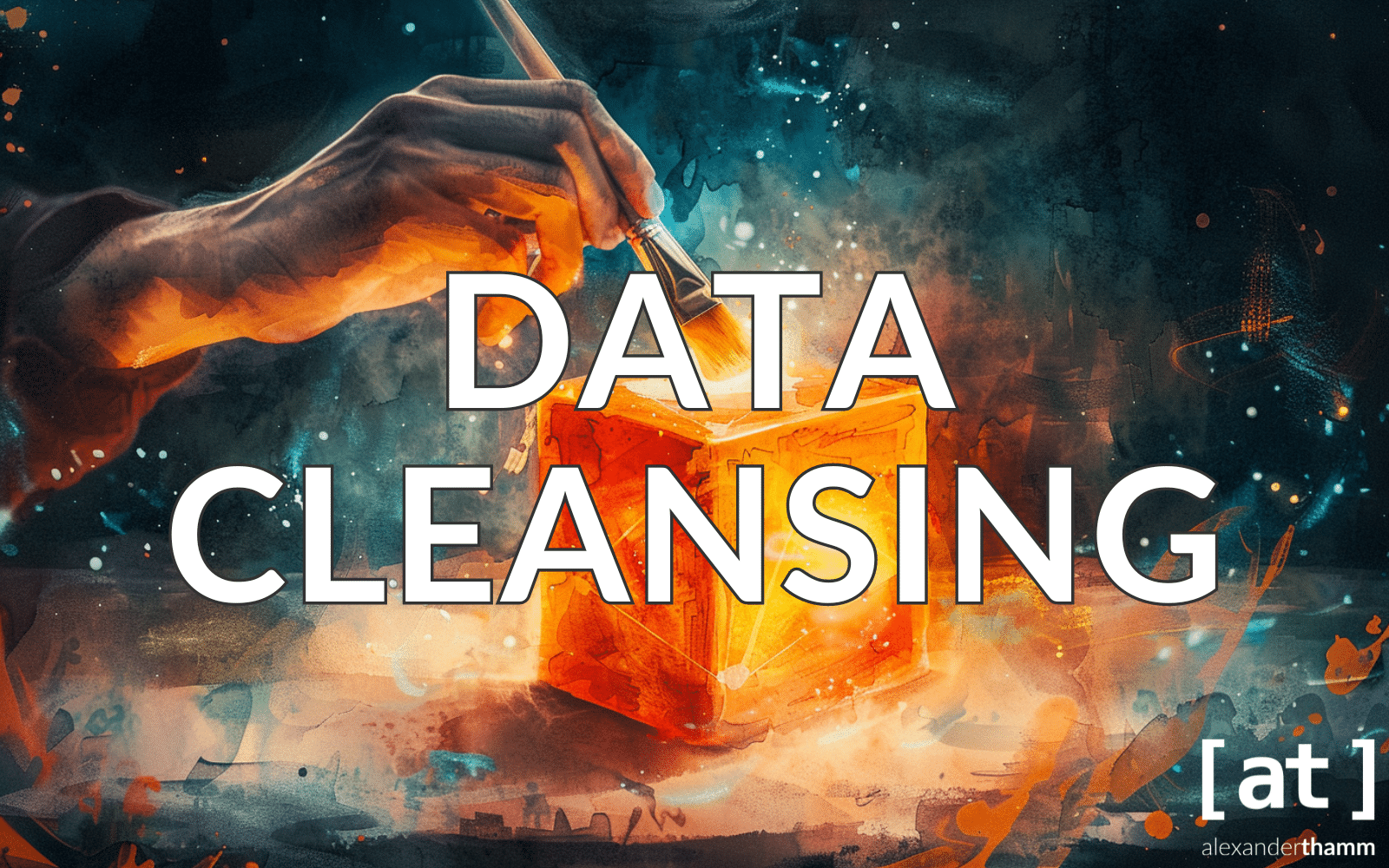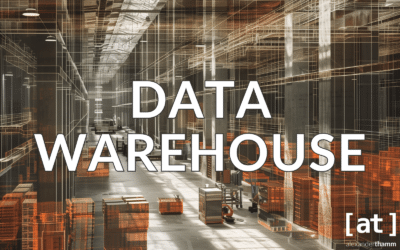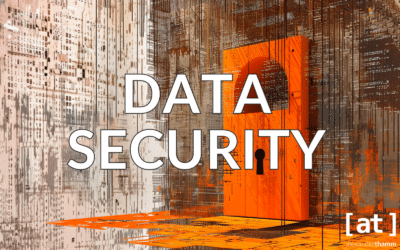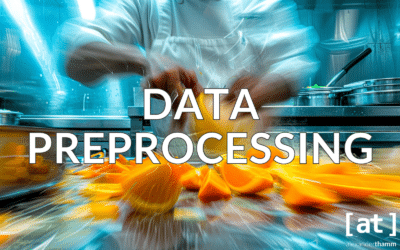Today, data quality and consistency have become fundamental to data mining and business intelligence processes. Data cleansing plays a key role in significantly improving data quality and consistency.
This article describes data cleansing and the individual steps of the process. Data cleansing has several advantages for companies. However, there are also some challenges associated with it. There are currently several data cleansing tools available. They allow users to easily perform data cleansing while automating the tasks.
Inhaltsverzeichnis
What is data cleansing?
Data cleansing is the Process that identifies and corrects a number of problems in the raw data. It improves the accuracy, consistency, uniformity and reliability of the data in Databasestables or other data storage devices. In this process, also known as data cleaning duplicate, inaccurate, incomplete and irrelevant information Data removed from the raw data records. In addition, the Data validated and standardisedto ensure that the data complies with certain rules and standards.
This mandatory process is crucial in order to lay the foundation for Data mining tasksincluding Data analysis and visualisation. It helps to create accurate and reliable Machine learning modelsvisual diagrams and reports. Ultimately, data cleansing facilitates the derivation of precise and well-founded decisions based on high-quality data.

Find out how data mining helps companies to gain hidden insights from large amounts of data using analytical techniques and tools.
What is the difference between data scrubbing and data cleansing?
Although data scrubbing is often also referred to as data cleansing, there are some differences between the two processes. Data scrubbing removes inaccurate data from a data set by identifying the incomplete, inaccurate or incorrect data. On the other hand, data scrubbing is similar to thoroughly scrubbing dirt from a floor to get a thoroughly cleaned surface. It can be seen as a Part of the data cleansing process be considered. Data cleansing and data scrubbing therefore both have a common goal. The aim is to improve data quality by correcting errors in the data.
The Data scrubbing however, is a much more comprehensive clean-up process than just searching the database and simply removing errors. It aims to solve more complex data problemssuch as removing duplicate data records, formatting problems and merging data from different sources.
Data scrubbing is also a More automated process than data cleansing. Data cleansing tasks can also be performed manually and the data is corrected and duplicates removed using automatic batch processing. More complex tools and algorithms are used to process large amounts of data efficiently. Data cleansing is often used to make accurate data-driven business decisions. Meanwhile, data scrubbing is often used in research and analysis where data integrity is critical.
Why should companies correct incorrect and incomplete data?
Companies often accumulate Data from various data sources with unstructured, structured or semi-structured data in various formats. This includes, for example, customer feedback data, sales documents, activities in user accounts, data from social media accounts and so on. However, it is more difficult to merge this data into a common data store, as the Data in these data sources inconsistent are incomplete. Therefore, this data cannot be used to achieve data-driven business goals unless data cleansing cleanses the incorrect and incomplete data. If data cleansing is not considered at the initial stage, data sets can become increasingly complex and difficult to process.
Data cleansing creates considerable added value for companies and data processes in various ways. They improves the quality of the data and reduces the time required for manual correction of the data in the analysis phase. High-quality data not only minimises errors in decision-making, but also helps to improve customer satisfaction and increase employee productivity.

In our article, we show you why good data quality is the key to reliable processes and how you can ensure this for your company:
Advantages of data cleansing
Data cleansing has several advantages for companies.
- Improving data qualityData quality is essential for accurate and effective data analyses, reports and other data integrations. The higher the data quality, the more accurate and reliable the results will be. It enables organisations to drive data-driven initiatives such as Business Intelligence and recommendation engines on a solid foundation.
- Higher productivity and efficiencyCleaned data can be used for data mining tasks, saving time on manual error correction. This allows companies to rationalise their business processes. Therefore, organisations can focus their resources more effectively on strategic initiatives and core activities, resulting in a more productive and flexible operating environment.
- Improving the decision-making process: Data quality is of the utmost importance for accurate and reliable results. The more accurate and reliable the data is, the more confident companies can make informed decisions. It also reduces the risk of poor decisions affecting the company's sales and reputation.
- Reduce costs and increase salesIncorrect and incomplete data can lead to unnecessary costs, e.g. for unwanted marketing campaigns, product launches and resource allocations. Organisations can improve the accuracy of strategic initiatives by eliminating inaccurate and incomplete data through cleansing. In this way, data cleansing reduces costs and helps to increase sales through more effective and targeted business processes.
- Strengthening customer relationshipsConsistent and accurate customer data enables companies to easily retrieve and analyse customer information and communicate effectively with them. All data about customers' preferences, strengths and interests can be easily identified, enabling more targeted customer care. These capabilities help to improve customer satisfaction and retention.
Challenges in data cleansing
Although data cleansing brings many advantages for companies, it is also associated with a number of challenges. We will discuss them in this section.
- Accidental data lossData cleansing removes duplicate, inaccurate, incomplete and irrelevant data. However, accidental data deletion can occur when removing such data. This can lead to permanent data loss. The damage can be significantly higher if critical data is involved. It is therefore important to have a reliable backup system before attempting to purge the data.
- Challenges in data backupData backup maintenance can be an extensive and difficult task, especially for large and complex data sets. Organisations need to make significant investments in reliable backup systems. In addition, backup processes can be resource-intensive, require a lot of storage space and can affect system performance.
- Challenges in relation to data securityCompany data used for data cleansing may contain confidential and personal information. Unauthorised access to such data may result in this data being disclosed to third parties, leading to breaches of information security regulations. It is therefore important to implement appropriate security controls prior to the purging process in order to protect the Maximum security of this data to ensure.
- Time-consuming processData cleansing includes several cleansing tasks such as deduplication, error correction, standardisation and replacement of missing data. These tasks require careful attention and can be time-consuming.
- Challenges in maintaining data integrityThere is a risk that the meaning of the data and the relationships between the data will be lost during the data cleansing process. It is therefore important to maintain the original accuracy of the data, as any change can lead to incorrect analyses and business decisions. The history of data changes must be preserved.

Data Mesh: Revolutionising data management. Discover decentralised agility and improved information sharing. How do businesses benefit? Learn more.
Introduction to Data Mesh: How companies benefit from decentralised data management
How is data cleansed? A step-by-step guide
Data cleansing is a step-by-step process that comprises the following key steps.
Step 1: Remove irrelevant data
Firstly, you need to identify the data that does not fit the specific business problem you are tackling. To do this, it's important to understand the exact business problem you're trying to solve. For example, let's say you need to target a customer group within a specific age range, but your data set contains customers who do not fall within that age range. In this case, you first need to remove these irrelevant records. This step helps to reduce distractions and create a clearer data set.
Step 2: Remove duplicates
Data duplicates are a common problem that occurs when collecting data from multiple sources. Duplicate data is repeated data in data sets. This data can be unnecessary and make the data set confusing. Therefore, use data cleansing tools to remove such duplicates.
Step 3: Remove missing or incomplete data
Sometimes certain information or critical and important data is missing from the data records. For example, some customers do not answer certain questions in customer feedback records, leaving these fields empty in your database. You need to decide whether these records should be deleted completely, filled with default values or left unchanged.
Step 4: Eliminate structural errors
Structural errors refer to typos, unusual naming conventions, inconsistent abbreviations, capitalisation or punctuation and other errors. These errors usually result from manual data entry and a lack of standardisation. For example, "Not applicable" and "N/A" may appear as separate categories, but should be analysed as one and the same category.
Step 5: Remove outliers
Outliers are data that differ significantly and do not match the rest of the data set. These outliers can distort the results of your analysis. Such data can be identified using outlier detection methods such as calculating the interquartile range and creating box plots to recognise them visually.
Step 6: Standardisation of the data
Check whether the data complies with the company's data standards. For example, if the company uses certain date formats, naming conventions or data categories, all data should comply with these standards. This step is important to ensure consistency between different data sets and systems.
Step 7: Data validation
The final step of the data cleansing process is to validate the cleansed data by answering important questions. For example, is the data set sufficient to fulfil your business case? Does it prove or disprove your theory? And does it meet the relevant standards?
Data Cleansing Tools
Nowadays, there are many data cleansing tools with which companies can easily perform cleansing tasks. Some of the most popular data cleansing tools are presented below.
- OpenRefineA free open source tool that can be used to clean data and convert it into various forums. It is a secure tool that allows you to edit the data on your computer. It also facilitates the extension of your dataset with other external data and web services.
- WINPURE Clean and MatchOne of the best cleansing tools on the market with one-click data cleansing functions. It also has a powerful data profiling tool. This tool can be installed locally and can also be used by non-technical personnel.
- DemandToolsSpecially designed to quickly cleanse and manage Salesforce data. It helps eliminate duplicates through automatic deduplication and duplicate avoidance. In addition, this tool automates data standardisation, changes and record ownership management. It helps to improve the results of marketing campaigns and create reliable Salesforce reports.
- IBM Infosphere Quality Stage: This tool supports data quality and Data governance and allows you to cleanse and manage your data. It has key features such as data profiling, standardisation, record matching and enrichment functions to improve the quality of the data. It even includes built-in governance features to support compliance with data rules.
- Oracle Enterprise Data QualityA comprehensive data quality management platform for CRM and other applications and cloud services. It has features such as data standardisation, address validation and data profiling. In addition to data cleansing capabilities, this tool facilitates comprehensive data governance, integration and business intelligence initiatives.
Efficiency and challenges in data cleansing
In conclusion, data cleansing is a complex but essential process that includes tasks such as deduplication, removing missing data and outliers and correcting structural errors. Despite the challenges that the data cleansing process presents, the benefits that a clean and accurate database offers organisations should not be underestimated. Modern software tools play a crucial role in automating this process and making it more efficient, leading to more reliable data management and ultimately better business decisions.











0 Kommentare